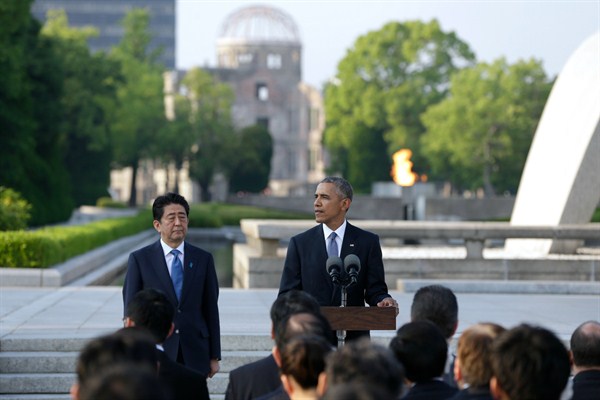President Barack Obama visited Hiroshima, Japan, today, the first visit by a sitting U.S. president to the site of the U.S. atomic bombing at the end of World War II. He remembered those lost in that devastating conflict and joined with Prime Minister Shinzo Abe in calling for renewed attention to the task of ridding the world of nuclear weapons. The leaders of the U.S. and Japan—the only nation to have used these terrible weapons and the nation against which they were used—stood together to call for an end to nuclear proliferation.
The symbolism of Obama’s visit aside, for many, the U.S.-Japan alliance appears to be a Cold War artifact. Chinese leaders, in particular, argue that the U.S. should put its close defense ties with Japan aside and take its military out of Asia. In the U.S. now, too, alliances in Asia are back in the spotlight after Donald Trump, who has now all but clinched the Republican nomination for president, stated that he thought it was time to rethink their importance to the United States.
But the strategic bargain, crafted by Washington and Tokyo during the Korean War, serves a far different purpose today than the bilateral treaty signed in 1951, alongside the San Francisco Peace Treaty. Nine years later, Prime Minister Nobusuke Kishi, Abe’s grandfather, renegotiated the treaty to incorporate a U.S. guarantee to assist in Japan’s defense and a Japanese guarantee to provide bases and facilities for U.S. forces in what was then known as the Far East. Since then, U.S. and Japanese security planners have periodically revisited the division of labor between their militaries. Just last year, Washington and Tokyo updated their alliance coordination to cope with the repeated crises that erupt in Northeast Asia today, most of all the threat from a nuclear North Korea and maritime disputes with China.

